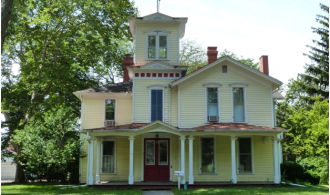So, you have decided to build your new home, which is, of course, an exciting if challenging process.
Experts agree that building your own home has a variety of benefits. We all imagine living in a house that stands out; a distinctive residence different from the run-of-the-mill developments which are so prevalent today. Design can be complicated and time consuming, however the right design will maximise property value and enhance its ‘kerb appeal’. As such, using an experienced architect is usually a wise investment, using design software which allows multiple views including:
Front elevation
This is a straight-on view of your home, emphasising features including window styles and the front porch, in addition to side porches and chimneys.

Side elevation
Whether left or right side, this showcases windows and the side depth of the house. The presence of any porches may help visualise the depth, with a side elevation also emphasising roof pitch. Architects in West London and other locations such as https://www.rbddesign.com/ will use this, in combination with other elevations to optimise the overall design.
Split elevation
This is a view of the home’s interior, drawn as if the house had been split in two from the middle. It shows interior height, wall thickness, stair rise and floor thickness. It will also detail where the interior door openings, fireplaces and kitchen cabinets will be located.
Colour
Choosing the correct colour scheme for your home may seem overwhelming, with the abundance of options available. Dark colours can create a feeling of warmth, while whites and neutrals seem cool and breezy. Similarly, the exterior of your home needs to be in keeping with its design. Modern graphics packages allow you to play with a choice of styles, colours and finishes accordingly, presenting each elevation in the colour scheme of your choice.
It is important to enhance any existing visual elements in your chosen location. Undertones in existing features such as your neighbour’s roof tiles, stonework and pathways will remain in place and colours need to be considered that will tie in with these harmoniously.
Also, consider the landscape. Does your house sit back from the road, amid a cluster of towering, large trees? Light colours will make the house stand out, whilst darker colours will make it recede.

